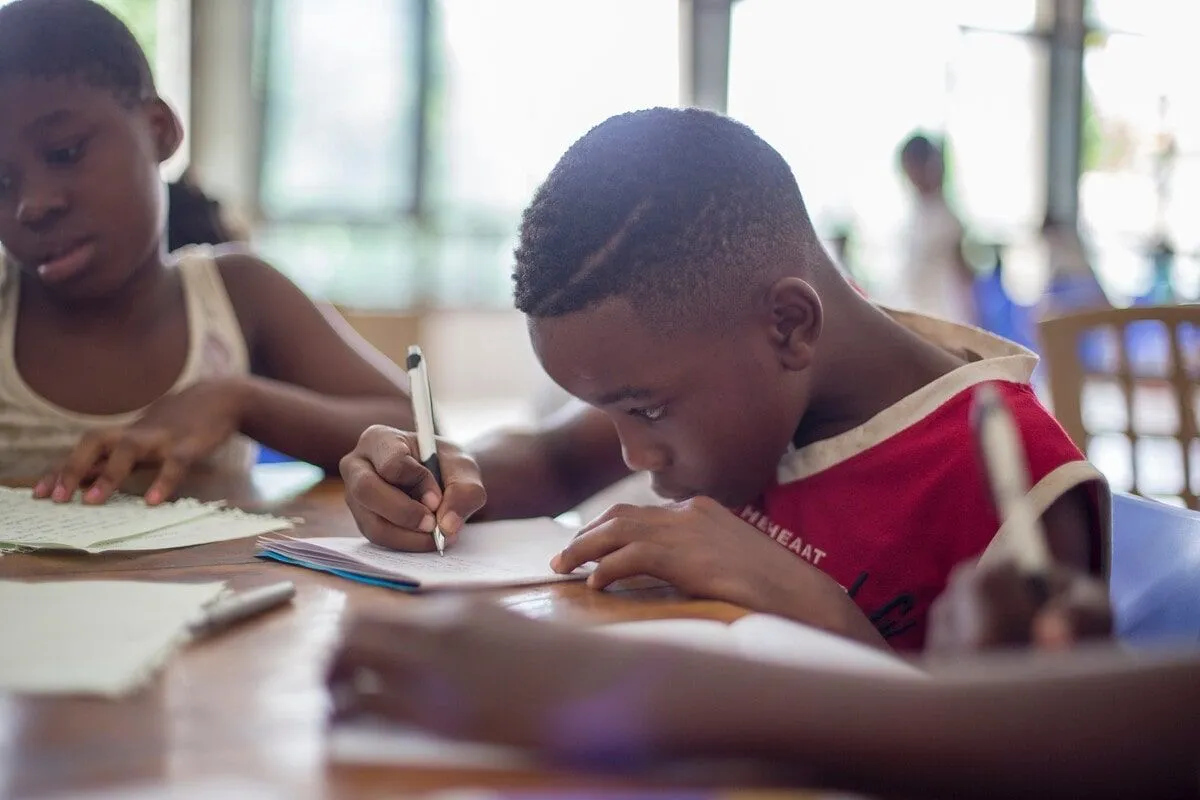FOR AGES 7 YEARS TO 11 YEARS
Image © Pexels.
It's no easy task getting your head around root words, prefixes and suffixes, especially if the summer fog is only starting to lift (if it even is at all)!
Prefixes and suffixes are a great way of adding to words to change their meaning within a sentence. They can help improve your child's understanding of nouns, verbs and adjectives and really enhance their spelling and vocabulary.
Although useful, from the outset these grammar terms are undoubtedly pretty complicated to understand, let alone explain! Do not fear, this guide will help you get to grips with them and support your child's primary English learning in no time. If you're looking for more grammar resources, why not check out Kidadl's guide to noun phrases and modal verbs which will offer some great background knowledge.
A great place to start is with root words. They are the beginning of the word family and allow children to see how words can be altered. Understanding root words provides a great basis for building their knowledge of prefixes and suffixes.
A root word is a word with no prefix or suffix added to it. An example of a root word is 'behave', which is a verb.
By adding a prefix or suffix to a root word, we can change its form (for example, from verb to noun) and what it means.

Image © Santi Vedrí.
Suffixes are a group of letters added to the end of a root word to add to or change its meaning. For example, adding -iour to 'behave' gives us the word 'behaviour'. Adding this suffix to 'behaviour' changes it from a verb to a noun.
We can use suffixes to tell if the word is a noun, verb, adjective or adverb.
Some suffixes have different meanings. For example, the suffix -ous means 'full of'. Using this, we can turn 'danger' into 'dangerous', which means 'full of danger'. Other examples include -graph, which means 'to write', e.g. 'autograph', and -age means 'an action', e.g. 'wreckage'.
Prefixes are a group of letters added to the beginning of a root word to change its meaning. For example, the prefix un- can be added to 'happy' to create the word 'unhappy'. Similarly, anti- can be added to 'clockwise' to make 'anticlockwise'.
Different prefixes have different meanings. For example, in 'aquarium', aqua- means 'water' and in 'transport', trans- means 'across'. Knowing what each prefix means can help us determine the meaning of the word within the sentence.

Image © prostooleh, under a Creative Commons license.
During KS2 primary English, children will learn how to use roots words, prefixes and suffixes to understand the new words they may meet. In Year 2, Year 3 and Year 4 children will normally learn a range of suffixes and prefixes to help them recognise the connections between words without changing the root word. For example, adding the suffix -ing to the root word 'jump' gives us 'jumping'. The root word stays the same although the tense is now different.
Throughout primary English KS1 and KS2 children will learn how to use suffixes to change the meaning of words. In Year 5 children learn the meaning of some suffixes, such as -ology means 'to study'. Children will learn how these affect the meaning of a sentence, as 'archaeology' means the study of the human past through remains. In Year 6 students will learn that sometimes a letter must be added before the suffix, for example, adding -ing to 'refer' to create 'referring' requires an additional 'r'.
During primary KS2, children will also be taught how to identify and use prefixes. In Year 1 to Year 4, they will learn how to add a prefix to change the meaning of a sentence, for example using dis- to change 'appoint' to 'disappoint'. In Year 5 and Year 6 they will learn what prefixes mean and should be able to select other words with the same prefix. They will also learn that there are spelling rules attached to prefixes. For example, if the word ends in 'y' as in 'lazy', the 'y' is taken off to add the prefix -ier in 'lazier'.
Teachers may help children learn prefixes and suffixes by choosing one and then providing a list of the variations for children to learn.

Image © pvproductions, under a Creative Commons license.
Looking for ways to practice at home? There's lots of simple activities to help keep children learning and engaged with prefixes and suffixes. It can be helpful to pick one suffix or prefix and get your child to make a list of all the new words that could be formed using them. Why not try with the suffix -ation? It can be added to lots of words, such as 'information' and 'preparation'.
To help test their knowledge and remember the spelling, try getting your child to look at the word, cover it up, write it down and then check they got it right. A great memory trick!
You also could use fill in the gap exercises where they have to fill in the missing suffixes or prefixes. Worksheets can be a really engaging way of getting children to practice these concepts. There are lots of resources available online that might provide some inspiration!
Read The Disclaimer
At Kidadl we pride ourselves on offering families original ideas to make the most of time spent together at home or out and about, wherever you are in the world. We strive to recommend the very best things that are suggested by our community and are things we would do ourselves - our aim is to be the trusted friend to parents.
We try our very best, but cannot guarantee perfection. We will always aim to give you accurate information at the date of publication - however, information does change, so it’s important you do your own research, double-check and make the decision that is right for your family.
Kidadl provides inspiration to entertain and educate your children. We recognise that not all activities and ideas are appropriate and suitable for all children and families or in all circumstances. Our recommended activities are based on age but these are a guide. We recommend that these ideas are used as inspiration, that ideas are undertaken with appropriate adult supervision, and that each adult uses their own discretion and knowledge of their children to consider the safety and suitability.
Kidadl cannot accept liability for the execution of these ideas, and parental supervision is advised at all times, as safety is paramount. Anyone using the information provided by Kidadl does so at their own risk and we can not accept liability if things go wrong.
Kidadl is independent and to make our service free to you the reader we are supported by advertising.
We hope you love our recommendations for products and services! What we suggest is selected independently by the Kidadl team. If you purchase using the buy now button we may earn a small commission. This does not influence our choices. Please note: prices are correct and items are available at the time the article was published.
Kidadl has a number of affiliate partners that we work with including Amazon. Please note that Kidadl is a participant in the Amazon Services LLC Associates Program, an affiliate advertising program designed to provide a means for sites to earn advertising fees by advertising and linking to amazon.
We also link to other websites, but are not responsible for their content.
Was this article helpful?



Browse Category



We’ll send you tons of inspiration to help you find a hidden gem in your local area or plan a big day out.



Check your inbox for your latest news from us. You have subscribed to:
Remember that you can always manage your preferences or unsubscribe through the link at the foot of each newsletter.